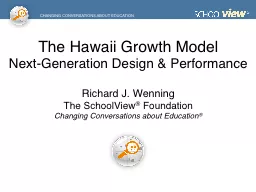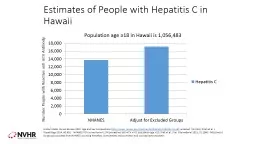PPT-The Hawaii Growth Model Next-Generation Design & Performance
Author : tatiana-dople | Published Date : 2018-02-16
Richard J Wenning The SchoolView Foundation Changing Conversations about Education NextGeneration Performance Dramatic not incremental improvements required for
Presentation Embed Code
Download Presentation
Download Presentation The PPT/PDF document "The Hawaii Growth Model Next-Generation ..." is the property of its rightful owner. Permission is granted to download and print the materials on this website for personal, non-commercial use only, and to display it on your personal computer provided you do not modify the materials and that you retain all copyright notices contained in the materials. By downloading content from our website, you accept the terms of this agreement.
The Hawaii Growth Model Next-Generation Design & Performance: Transcript
Download Rules Of Document
"The Hawaii Growth Model Next-Generation Design & Performance"The content belongs to its owner. You may download and print it for personal use, without modification, and keep all copyright notices. By downloading, you agree to these terms.
Related Documents














![[READ] - Next-Generation ACCUPLACER Secrets Study Guide: ACCUPLACER Practice Test Questions](https://thumbs.docslides.com/902844/read-next-generation-accuplacer-secrets-study-guide-accuplacer-practice-test-questions-and-exam-review-for-the-next-generation.jpg)